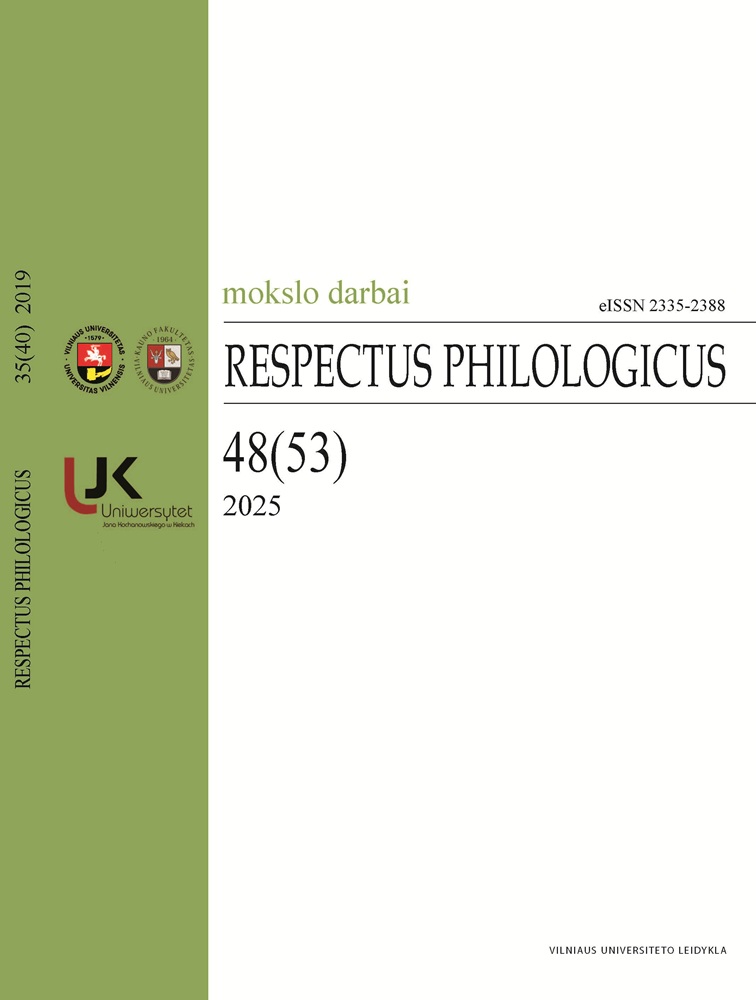Abstract
This article analyses the variety of identifying parts in the names of food establishments (cafés, restaurants, etc.) in Vilnius and the relationship between identifying parts and the words that define their type, based on language usage. The research material was collected from the public city environment, where all the names of the establishments were photographed, and a database was created. An identifying part of the names was found to be written in English, e.g., The Old Green, Spanish, e.g., Mulo Desnudo, French, e.g., Café de Paris, and other languages. Based on the language relationship between an identifying part and the words defining their type, the names are either monolingual, e.g., baras Begemoto sapnas, or bilingual, e.g., restoranas Café Montmartre (Restaurant Café Montmartre). The use of a single language for an identifying part indicates the necessity to maintain linguistic coherence – it creates an impression of consistency and professionalism, making it clear to the target audience. A wider audience is reached by combining English and Lithuanian, and an image of internationalism is conveyed. The relationship between an identifying part and the words defining its type reflects the dual identity of Vilnius and its society – the city is part of the global world, but ethnicity remains significant. An English-language name adds prestige to the place, while the use of Lithuanian appeals to the identity of residents.

